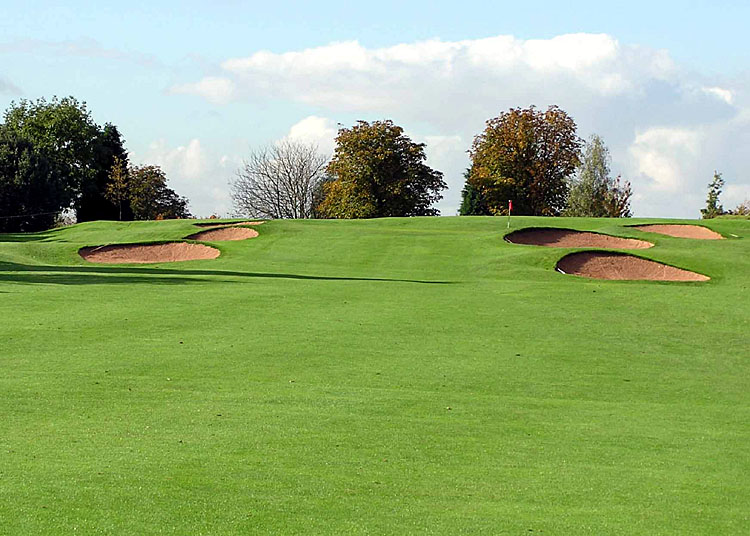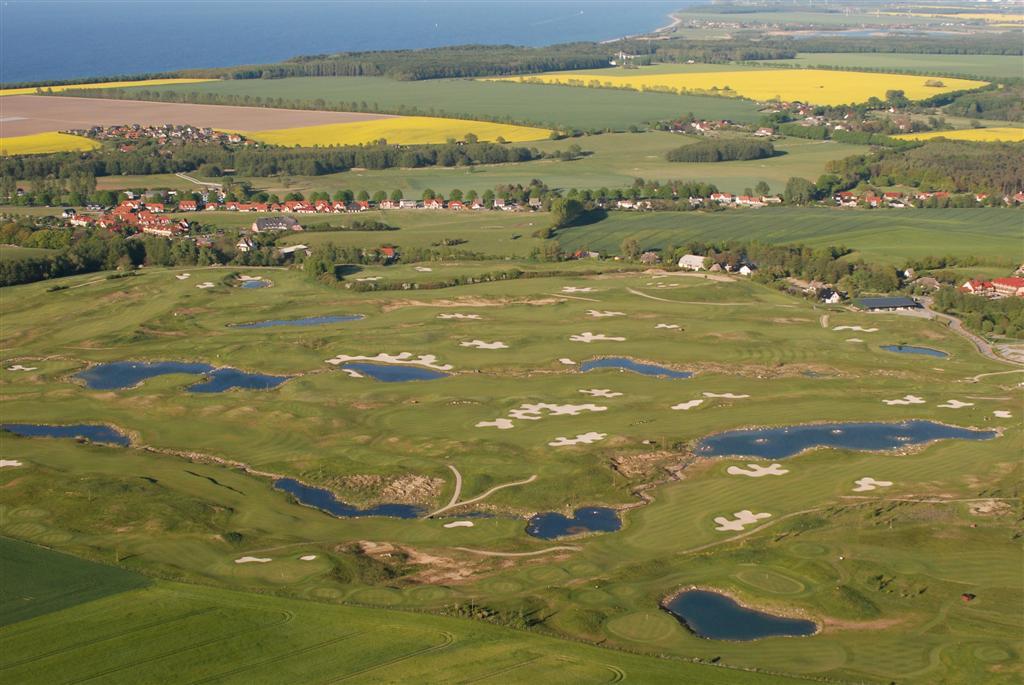|
Bacterial Wilt Of Turfgrass
Bacterial wilt of turfgrass is the only known bacterial disease of turf. The causal agent is the Gram negative bacterium '' Xanthomonas campestris'' pv. ''graminis''. The first case of bacterial wilt of turf was reported in a cultivar of creeping bentgrass known as Toronto or C-15, which is found throughout the midwestern United States. Until the causal agent was identified in 1984, the disease was referred to simply as C-15 decline. This disease is almost exclusively found on putting greens at golf courses where extensive mowing creates wounds in the grass which the pathogen uses in order to enter the host and cause disease. Hosts and symptoms Creeping bentgrass (''Agrostis stolonifera'') and annual bluegrasses (''Poa annua'') are the makeup of most putting greens, as well as the preferred hosts of this pathogen. Specifically, Toronto (C-15), Seaside, and Nemisilla are the cultivars of creeping bentgrass most commonly affected. The bacteria enter the plant host and interfere ... [...More Info...] [...Related Items...] OR: [Wikipedia] [Google] [Baidu] |
Bacteria
Bacteria (; singular: bacterium) are ubiquitous, mostly free-living organisms often consisting of one biological cell. They constitute a large domain of prokaryotic microorganisms. Typically a few micrometres in length, bacteria were among the first life forms to appear on Earth, and are present in most of its habitats. Bacteria inhabit soil, water, acidic hot springs, radioactive waste, and the deep biosphere of Earth's crust. Bacteria are vital in many stages of the nutrient cycle by recycling nutrients such as the fixation of nitrogen from the atmosphere. The nutrient cycle includes the decomposition of dead bodies; bacteria are responsible for the putrefaction stage in this process. In the biological communities surrounding hydrothermal vents and cold seeps, extremophile bacteria provide the nutrients needed to sustain life by converting dissolved compounds, such as hydrogen sulphide and methane, to energy. Bacteria also live in symbiotic and parasitic re ... [...More Info...] [...Related Items...] OR: [Wikipedia] [Google] [Baidu] |
Pseudomonadota
Pseudomonadota (synonym Proteobacteria) is a major phylum of Gram-negative bacteria. The renaming of phyla in 2021 remains controversial among microbiologists, many of whom continue to use the earlier names of long standing in the literature. The phylum Proteobacteria includes a wide variety of pathogenic genera, such as '' Escherichia'', '' Salmonella'', '' Vibrio'', '' Yersinia'', '' Legionella'', and many others.Slonczewski JL, Foster JW, Foster E. Microbiology: An Evolving Science 5th Ed. WW Norton & Company; 2020. Others are free-living (non parasitic) and include many of the bacteria responsible for nitrogen fixation. Carl Woese established this grouping in 1987, calling it informally the "purple bacteria and their relatives". Because of the great diversity of forms found in this group, it was later informally named Proteobacteria, after Proteus, a Greek god of the sea capable of assuming many different shapes (not after the Proteobacteria genus ''Proteus''). In 2021 the In ... [...More Info...] [...Related Items...] OR: [Wikipedia] [Google] [Baidu] |
Gammaproteobacteria
Gammaproteobacteria is a class of bacteria in the phylum Pseudomonadota (synonym Proteobacteria). It contains about 250 genera, which makes it the most genera-rich taxon of the Prokaryotes. Several medically, ecologically, and scientifically important groups of bacteria belong to this class. It is composed by all Gram-negative microbes and is the most phylogenetically and physiologically diverse class of Proteobacteria. These microorganisms can live in several terrestrial and marine environments, in which they play various important roles, including ''extreme environments'' such as hydrothermal vents. They generally have different shapes - rods, curved rods, cocci, spirilla, and filaments and include free living bacteria, biofilm formers, commensals and symbionts, some also have the distinctive trait of being bioluminescent. Metabolisms found in the different genera are very different; there are both aerobic and anaerobic (obligate or facultative) species, chemolithoautotroph ... [...More Info...] [...Related Items...] OR: [Wikipedia] [Google] [Baidu] |
Xanthomonadales
The Xanthomonadales are a bacterial order within the Gammaproteobacteria. They are one of the largest groups of bacterial phytopathogens, harbouring species such as '' Xanthomonas citri'', '' Xanthomonas euvesicatoria'', ''Xanthomonas oryzae'' and ''Xylella fastidiosa''. These bacteria affect agriculturally important plants including tomatoes, bananas, citrus plants, rice, and coffee. Many species within the order are also human pathogens. Species within the genus ''Stenotrophomonas'' are multidrug resistant opportunistic pathogens that are responsible for nosocomial infections in immunodeficient patients. Characteristics The Xanthomonadales are gram-negative, catalase positive, non-spore forming obligate aerobes.Saddler GS, Bradbury JF (2005) Order III. Xanthomonadales ord. nov. In: Bergey’s Manual of Systematic Bacteriology. pp. 63-122. Eds Brenner DJ, Krieg NR, Staley JT, Garrity GM, Boone, Vos P, Goodfellow M, Rainey FA, Schleifer K-H Springer-: Austin. Members belonging ... [...More Info...] [...Related Items...] OR: [Wikipedia] [Google] [Baidu] |
Xanthomonadaceae
Xanthomonadaceae is a family of Pseudomonadota Pseudomonadota (synonym Proteobacteria) is a major phylum of Gram-negative bacteria. The renaming of phyla in 2021 remains controversial among microbiologists, many of whom continue to use the earlier names of long standing in the literature. The ... within the Xanthomonadales order. It was previously known as Lysobacteraceae. References External links National J.P. Euzéby: List of Prokaryotic names with Standing in Nomenclature (LPSN) {{gammaproteobacteria-stub ... [...More Info...] [...Related Items...] OR: [Wikipedia] [Google] [Baidu] |
Xanthomonas
''Xanthomonas'' (from greek: ''xanthos'' – “yellow”; ''monas'' – “entity”) is a genus of bacteria, many of which cause plant diseases. There are at least 27 plant associated ''Xanthomonas spp.'', that all together infect at least 400 plant species. Different species typically have specific host and/or tissue range and colonization strategies. Taxonomy The genus ''Xanthomonas'' has been subject of numerous taxonomic and phylogenetic studies and was first described as ''Bacterium vesicatorium'' as a pathogen of pepper and tomato in 1921. Dowson later reclassified the bacterium as ''Xanthomonas campestris'' and proposed the genus ''Xanthomonas''.''Xanthomonas'' was first described as a monotypic genus and further research resulted in the division into two groups, A and B. Later work using DNA:DNA hybridization has served as a framework for the general ''Xanthomonas'' species classification. Other tools, including multilocus sequence analysis and amplified fragment-length ... [...More Info...] [...Related Items...] OR: [Wikipedia] [Google] [Baidu] |
Xanthomonas Campestris
''Xanthomonas campestris'' is a bacterium that causes a variety of plant diseases, including "black rot" in cruciferous vegetables and bacterial wilt of turfgrass. It is also used in the commercial production of xanthan gum, a high-molecular-weight polysaccharide which has many important uses, especially in the food industry. Pathovars (pv. means pathovar, a type of classification based on the host plant that is attacked by ''Xanthomonas campestris'') * ''Xanthomonas campestris'' pv. ''armoraciae'' * ''Xanthomonas campestris'' pv. ''begoniae'' A * ''Xanthomonas campestris'' pv. ''begoniae'' B * ''Xanthomonas campestris'' pv. ''campestris'' * ''Xanthomonas campestris'' pv. ''cannabis'' * ''Xanthomonas campestris'' pv. ''carota'' * ''Xanthomonas campestris'' pv. ''corylina'' * ''Xanthomonas campestris'' pv. ''dieffenbachiae'' * ''Xanthomonas campestris'' pv. ''glycines'' syn. ''Xanthomonas axonopodis'' pv. ''glycines'' * ''Xanthomonas campestris'' pv. ''graminis'' * ''Xanth ... [...More Info...] [...Related Items...] OR: [Wikipedia] [Google] [Baidu] |
Golf Course Turf
Golf course turf is the grass covering golf courses, which is used as a playing surface in the sport of golf. The grass is carefully maintained by a greenskeeper to control weeds, insects and to introduce nutrients such as nitrogen fertilization. The grass is kept at a constant height by mowing. Nutrient management Nitrogen application timing Nitrogen is the nutrient required in greatest amount by turfgrass. During an autumn season, rates of nitrogen (N) application should be lowered to consider previous application's residual available nitrate (NO) and mineralization (inorganic N), especially if there is substantial organic matter which releases its supply of sequestered N. In the spring, heavy nitrogen applications for the first two months caused changes in color, but the nitrogen response by the grass was not maintained and a decrease in color was found as the growing season progressed. Spring fertilization can increase the tiller numbers of the grass compared to fal ... [...More Info...] [...Related Items...] OR: [Wikipedia] [Google] [Baidu] |
Putting Green
A golf course is the grounds on which the sport of golf is played. It consists of a series of holes, each consisting of a tee box, a fairway, the rough and other hazards, and a green with a cylindrical hole in the ground, known as a "cup". The cup holds a flagstick, known as a "pin". A standard round of golf consists of 18 holes, and as such most courses contain 18 distinct holes; however, there are many 9-hole courses and some that have holes with shared fairways or greens. There are also courses with a non-standard number of holes, such as 12 or 14. The vast majority of golf courses have holes of varying length and difficulties that are assigned a standard score, known as par, that a proficient player should be able to achieve; this is usually three, four or five strokes. Par-3 courses consist of holes all of which have a par of three. Short courses have gained in popularity; these consist of mostly par 3 holes, but often have some short par 4 holes. Many older courses ar ... [...More Info...] [...Related Items...] OR: [Wikipedia] [Google] [Baidu] |
Agrostis Stolonifera
''Agrostis stolonifera'' (creeping bentgrass, creeping bent, fiorin, spreading bent or carpet bentgrass) is a perennial grass species in the family Poaceae. Description ''Agrostis stolonifera'' is stoloniferous and may form mats or tufts. The prostrate stems of this species grow to long with long leaf blades and a panicle reaching up to in height. The ligule is pointed and up to long. This differs from common bent, '' Agrostis capillaris'', which is short and does not come to a point. The leaves are tapering, often with a blue-grey colour. The grass is not tufted and the spikelets are red and tightly closed within the panicle. It flowers in July and August. Distribution It can be found growing in a variety of habitats including woodlands, grasslands and meadows, wetlands, riparian zones, and as a pioneer species on disturbed sites. It is native to Eurasia and North Africa ( Algeria, Morocco and Tunisia). It is possible that it may also be native to northern parts ... [...More Info...] [...Related Items...] OR: [Wikipedia] [Google] [Baidu] |
Poa Annua
''Poa annua'', or annual meadow grass (known in America more commonly as annual bluegrass or simply poa), is a widespread low-growing turfgrass in temperate climates. Notwithstanding the reference to annual plant in its name, perennial bio-types do exist. This grass may have originated as a hybrid between ''Poa supina'' and ''Poa infirma''. Description It has a slightly creeping, fibrous, rootstock. The stem grows from 15–25 cm (6-10 in.) high. It is slightly flattened, due to being folded rather than rolled. The panicle is open and triangular shaped, 5 to 7.5 cm (2 to 3 in.) long. The spikelets are stalked, awnless, 1 to 2 cm (3/8 to 3/4 in.) long when flowering, and loosely arranged on delicate paired or spreading branches. Sometimes they are tinged purple. The vivid green leaves are short and blunt at the tips, shaped like the prow of a small canoe. They are soft and drooping. Long sheaths clasp the stem. The leaves are smooth above and below, wit ... [...More Info...] [...Related Items...] OR: [Wikipedia] [Google] [Baidu] |




